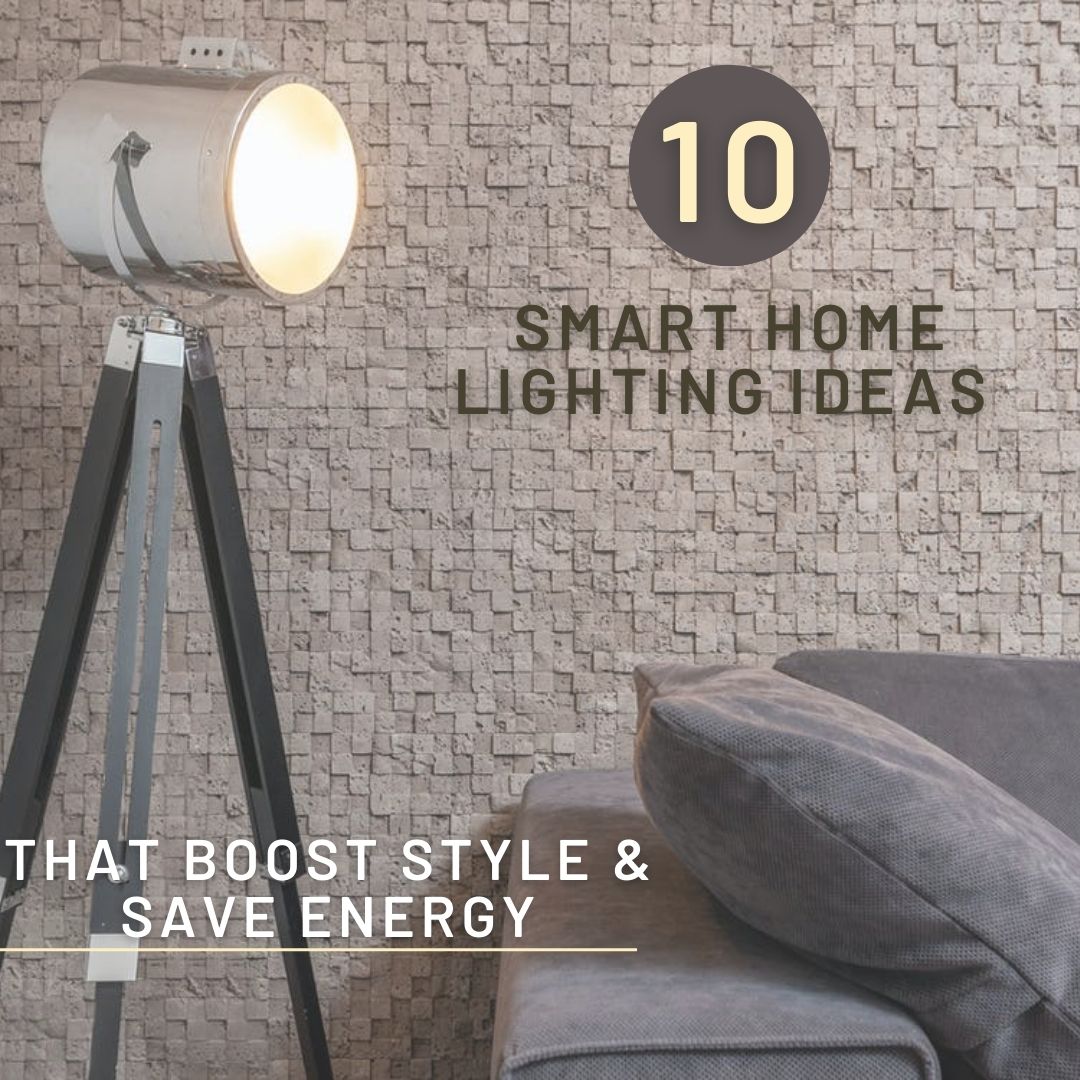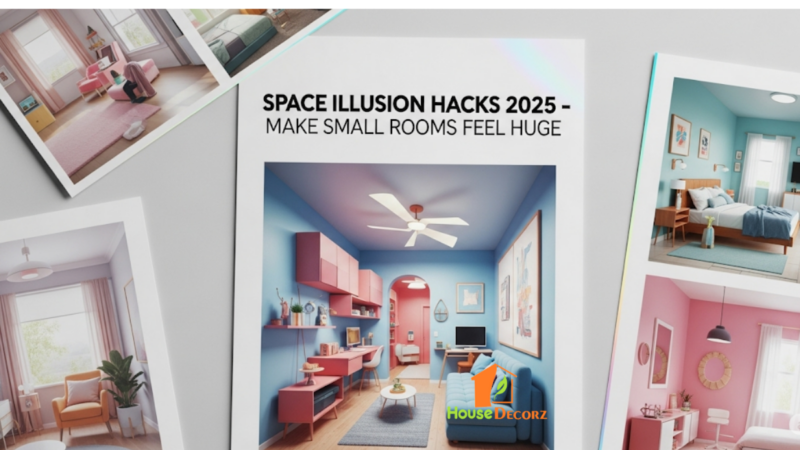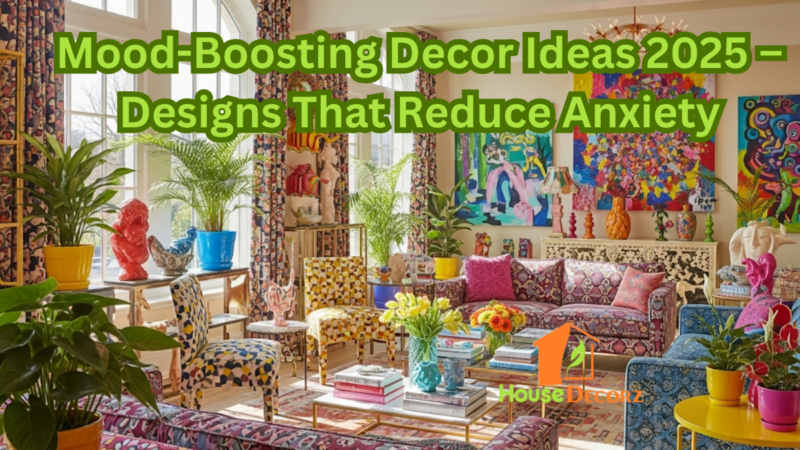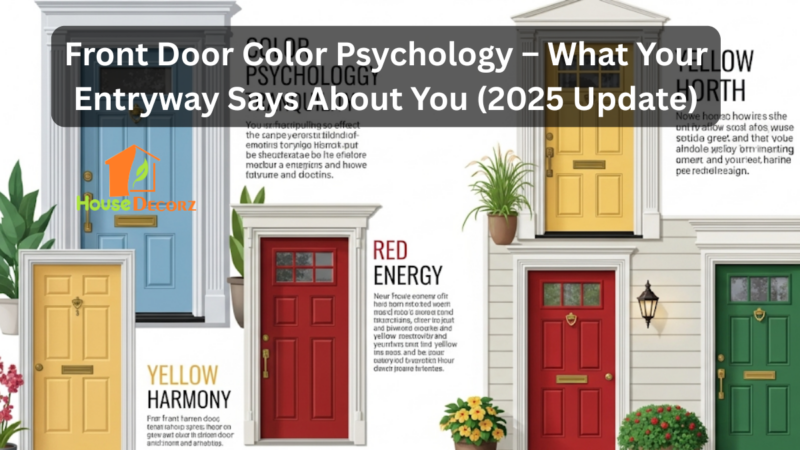10 Smart Home Lighting Ideas That Boost Style & Save Energy

Lighting does more than illuminate a room—it shapes mood, boosts efficiency, and enhances home security. With the rise of home automation, smart home lighting ideas are redefining how we think about lighting. Whether you’re upgrading your current setup or designing a connected home from scratch, smart lighting offers flexibility, ambiance, and energy saving tips that are easy to implement.
Let’s explore innovative and practical ways to transform your space using the latest lighting tech, from LED mood lighting to voice-controlled systems.
Start with Smart Bulbs and Light Strips
Smart bulbs are the foundation of most modern lighting systems. They fit into standard fixtures and connect to apps or hubs like Alexa, Google Home, or Apple HomeKit.
Benefits:
- Adjustable brightness and color
- Remote access via phone
- Schedule-based automation
Example:
Philips Hue and LIFX bulbs let you change the mood of your room instantly, whether you’re hosting a party or winding down with a book. Pair with LED mood lighting strips under beds, cabinets, or behind TVs to add depth and drama to your space.
Set the Scene with Lighting Automation
One of the greatest advantages of smart lighting is automation. You can program your lights to match your lifestyle and reduce energy waste.
Ideas for Scenes:
- “Wake Up”: Gradual brightness increase in the morning
- “Movie Time”: Dim lights and activate soft LED mood lighting
- “Away Mode”: Randomized lighting to simulate occupancy
This hands-free setup not only adds convenience but also serves as a subtle security feature when you’re away from home.
Use Motion Sensors to Light Smarter
Motion-activated smart lighting is perfect for areas like hallways, bathrooms, pantries, and garages. The lights only turn on when needed, making them ideal for energy saving.
Pro Tip: Install motion sensors with adjustable timers and sensitivity levels. Many smart switches now include built-in motion detectors for seamless integration.
Control Everything with Voice or App
Forget fumbling for a switch—use your voice to control lights with smart assistants like Alexa, Siri, or Google Assistant.
Common Commands:
- “Turn on the kitchen lights”
- “Set the bedroom lights to 20%”
- “Change the living room color to blue”
Apps also allow you to control lights remotely, perfect for when you’re traveling or want to set the mood before you walk in the door.
Go Beyond Bulbs: Smart Switches and Dimmers
If you don’t want to replace every bulb in your house, smart switches and dimmers are a great alternative. They let you control regular bulbs using smart systems.
Why Use Them:
- Cost-effective for larger homes
- Works with existing fixtures
- Adds dimming capabilities to basic lights
Many options support multi-way switches (for rooms with more than one switch) and can be installed without neutral wires.
Choose LED for Long-Term Energy Savings
Smart lighting and energy saving tips go hand in hand. LED bulbs use up to 80% less energy than traditional incandescent bulbs and last much longer.
More Energy-Saving Tips:
- Use dimmers to reduce power usage
- Set timers for outdoor lighting
- Program lights to turn off automatically when not in use
Over time, the cost savings on your utility bill can easily justify the investment in smart lighting.
Add Style with Color-Changing LED Mood Lighting
LED mood lighting isn’t just functional—it adds personality to any room. With millions of color choices, you can tailor lighting to fit your activities and moods.
Creative Ideas:
- Use color-changing strips behind your headboard for a relaxing bedroom glow
- Highlight art or shelves with subtle accent lights
- Create a home office that boosts focus during the day and helps you unwind in the evening
Many systems let you sync lights to music, turning your living room into an immersive entertainment zone.
Outdoor Smart Lighting for Safety and Style
Extend smart lighting outdoors for security, convenience, and curb appeal. Weather-resistant smart floodlights and path lights keep your yard well-lit and safe.
Examples:
- Set porch lights to turn on at sunset automatically
- Use motion-activated floodlights near garages or back doors
- Add ambient lighting around patios or decks for evening gatherings
Outdoor smart lights also integrate well with security cameras and smart doorbells.
Sync Lighting with Your Daily Routine Using Circadian Rhythm Settings
Some smart lighting systems now offer circadian rhythm support—automatically adjusting color temperature and brightness based on the time of day. This helps your body stay in sync with natural light patterns, improving sleep and focus.
How It Works:
- Warm, dim lighting in the evening to signal wind-down
- Cool, bright light in the morning to promote alertness
- Gradual transitions to avoid harsh lighting changes
Example:
Systems like Philips Hue and Govee offer circadian or “sunrise to sunset” modes that subtly shift your lighting throughout the day, creating a more natural, comfortable living environment.
Integrate Lighting with Other Smart Home Devices
To maximize convenience and control, integrate your smart lighting with other connected home devices. Through routines or automation platforms like IFTTT or SmartThings, lights can respond to more than just voice or time triggers.
Integration Ideas:
- Lights turn off automatically when the smart lock engages (indicating you’ve left home)
- Activate hallway lights when a smart doorbell detects motion at night
- Flash lights red when a smart smoke detector goes off
This level of automation not only boosts efficiency but also adds a layer of safety and responsiveness to your home.
Recommendation
Transform Your Room with Stunning Light Decorations: A Complete Guide for 2025
Stylish Outdoor Lighting Ideas For Backyard
How to Install Outdoor Lighting?
Engagement Party Decoration Ideas: Unique & Inspiring Ways to Celebrate Your Special Day
Conclusion
With today’s technology, smart home lighting ideas make it easy to create spaces that are energy-efficient, secure, and tailored to your daily routine. From color-changing LED mood lighting to automated schedules that align with your lifestyle, smart lighting offers both practical benefits and creative flexibility. By combining smart devices with thoughtful planning and energy saving tips, you’ll build a lighting system that adds beauty and intelligence to every room.
FAQs
Q: Do I need a hub to use smart lighting?
A: Not always. Many smart bulbs and devices work with Wi-Fi and can be controlled directly through an app. Hubs offer more control and integration but aren’t required.
Q: What’s the easiest way to start with smart lighting?
A: Start with a smart bulb in a main living space. Download the corresponding app, connect it to your Wi-Fi, and experiment with features like color and scheduling.
Q: How do I choose between smart bulbs and smart switches?
A: Smart bulbs are easier to install and more flexible with features like color control. Smart switches are better for controlling entire rooms or existing fixtures.
Q: Can smart lighting really save energy?
A: Yes. Smart lighting helps reduce waste through automation, motion sensors, and efficient LED bulbs, often leading to noticeable savings on electricity bills.
Q: Is smart lighting secure?
A: Yes, if set up properly. Use strong passwords, keep firmware updated, and secure your Wi-Fi network to protect your smart home from unauthorized access.






